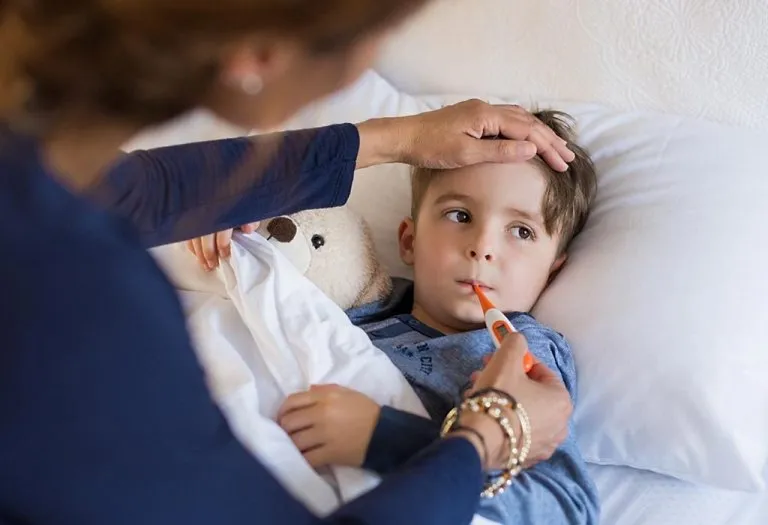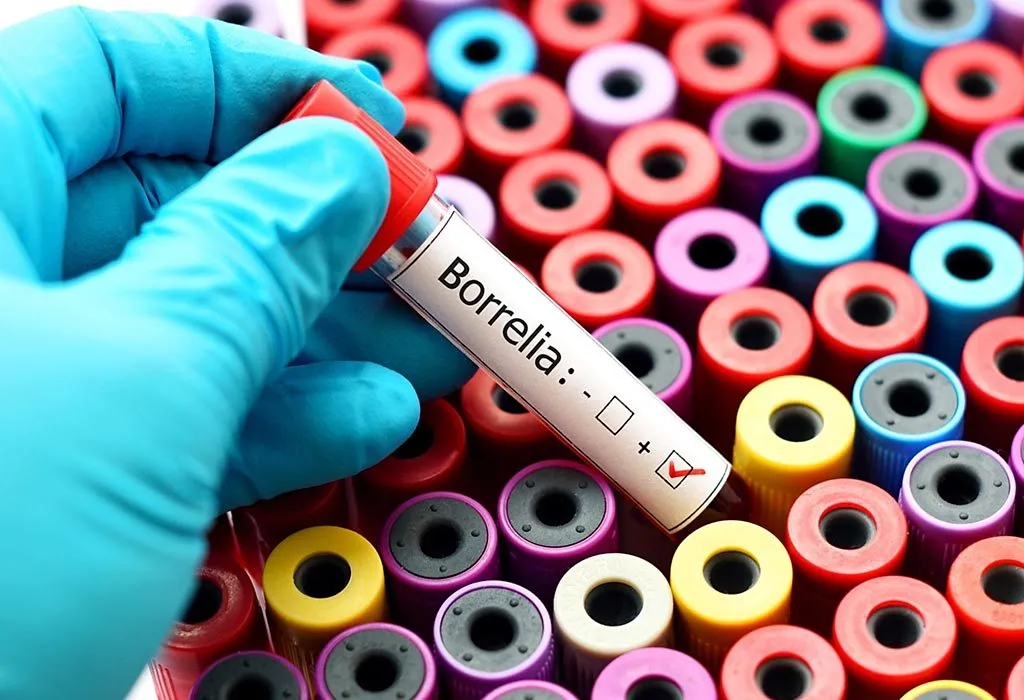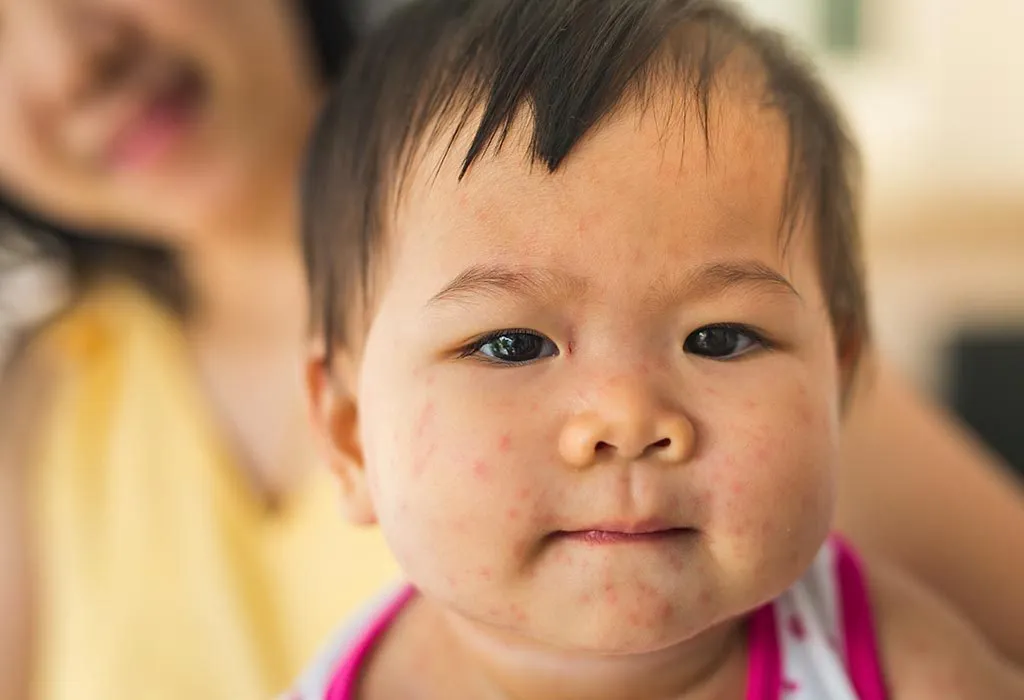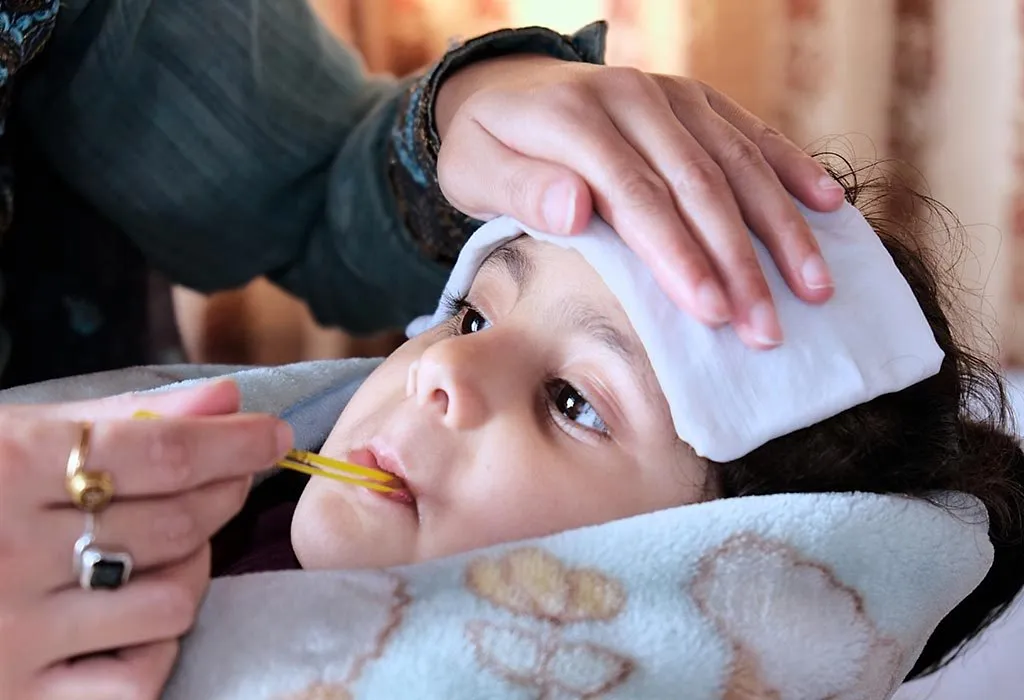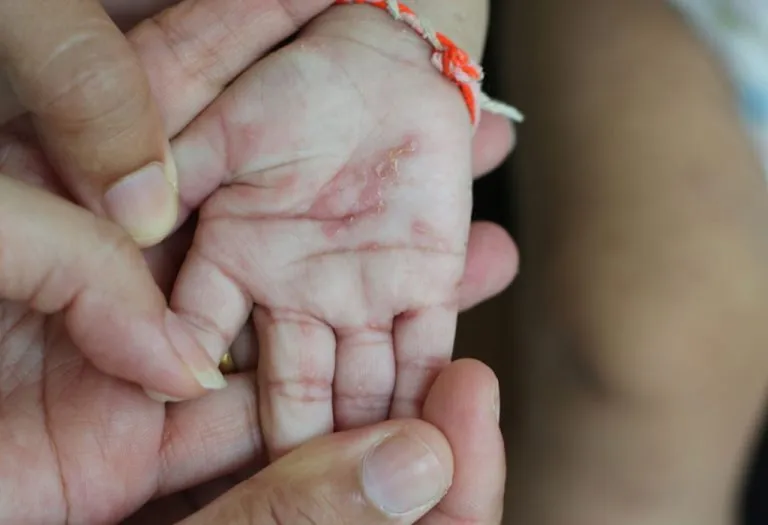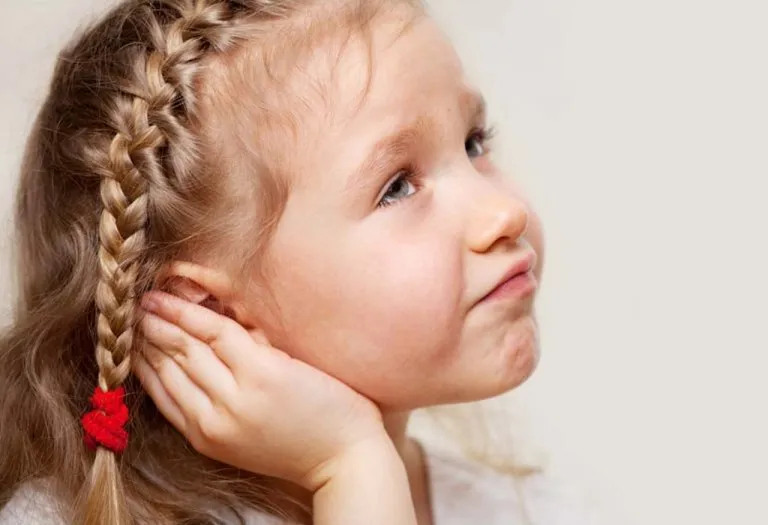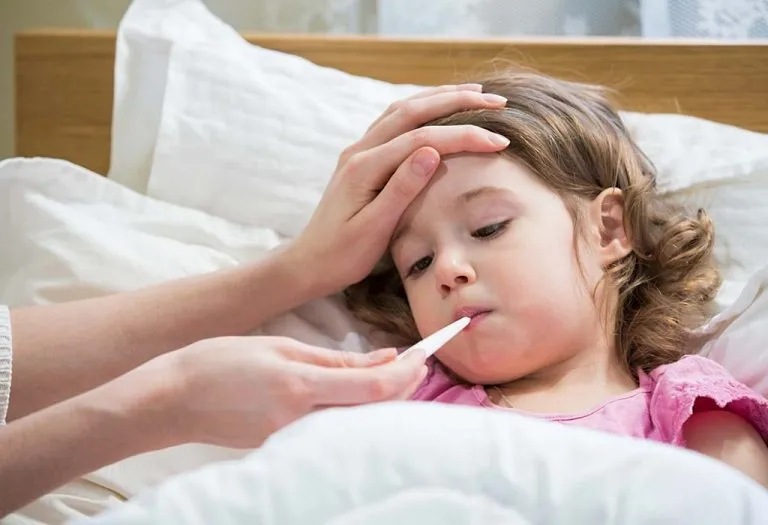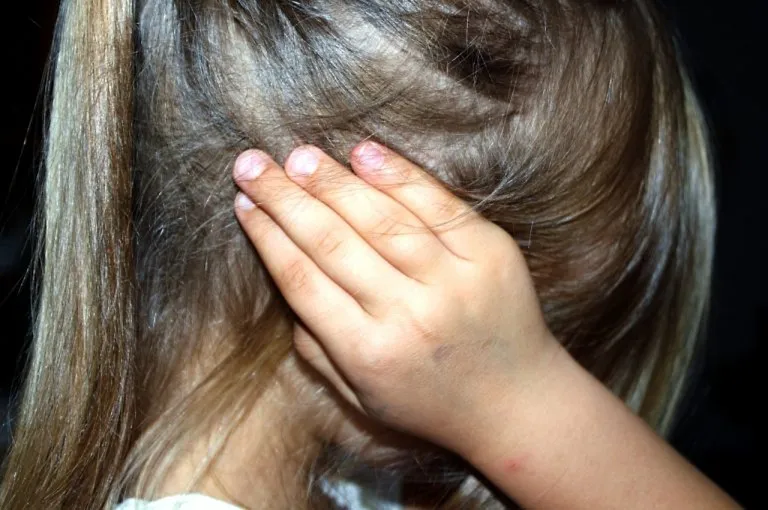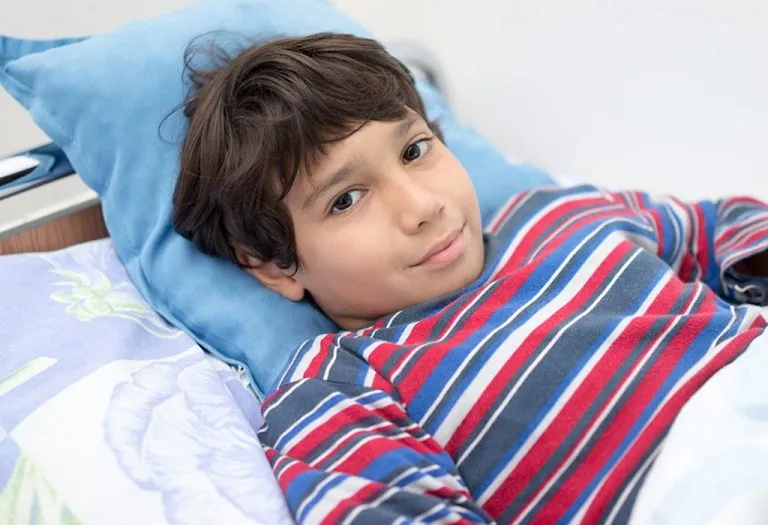Recurrent Fever in Children – When Should You Worry?

A fever is categorised by a body temperature above 100.4˚F, which may or may not be a sign of infection (1). High fevers often occur due to infections that may or may not always be life-threatening. Children tend to fall ill easily because their immune system is not fully developed. Nonetheless, a fever becomes a matter of concern in children less than 2 years of age if the fever is persistent. Why does my child get a fever every month? Recurrent fever in children indicates underlying health issues which parents should not ignore. If the fever comes back every 4 hours in your child, even after medication, you must not delay getting a follow-up with the doctor. But before you schedule a follow-up check with your paediatrician, we suggest reading this article. This article lays emphasis on recurrent fever in 3-year-olds or paediatric-age children, the various causes, and the ways to alleviate body temperature during a fever.
Causes of Recurrent Fever in a Child
To know whether a child has a recurrent fever or not, certain aspects need to be considered like the age of a child at the onset, medical history of the family, febrile episode duration, a span of the interval from one episode to another, related symptoms and response to medication. Furthermore, data related to animal exposure and travel history are useful for planning further treatment.
Recurrent fever in a toddler is defined as three or more episodes occurring in a six-month period, a minimum of seven days apart, without obvious symptoms or causes (2). But why does my child get fevers so often? The causes of recurrent fever may be infectious or non-infectious. Here, we list different causes with the accompanying symptoms (3) (4).
1. Periodic Fever Syndrome
Periodic fever is a syndrome that causes a fever without any signs of infection (5). PFAPA (periodic fever, aphthous stomatitis, pharyngitis, adenitis) syndrome usually starts early in children around 2 to 5 years of age and can affect both boys and girls. According to the Cleveland Clinic, recurrent fever syndrome, or periodic fever syndrome, is not an autoimmune disease but an autoinflammatory disease in which an individual’s immune system is affected due to a regulation problem or an abnormality (6). In this condition, children usually develop mouth sores, sore throat, and swelling of glands in the neck, along with fever (1).
Symptoms
- Joint pain
- Recurrent fever
- Abdominal pain
- Inflammation in the kidney
- Chest pain
2. Borrelia Burgdorferi
Borrelia is the causative bacterium for Lyme disease. Infected ticks pass on the illness to a human by biting (7). If left untreated, Lyme disease causes recurrent fever. Starting antibiotics is advisable as soon as you notice a tick bite.
Symptoms
- Fever
- Muscles ache accompanied by chills
- Night Sweats
- Fatigue
- Nausea
- A headache
- Joint pain
- Rashes
3. Cyclic Neutropenia
When the white blood cell count of your body drops to a lower-than-normal level, it is unable to fight off infection and kill bacteria (8). This becomes a cause of recurrent fever. It happens in a 3-week cyclic pattern of wellness and cell count drops.
Symptoms
- Fever
- Feeling ill
- Loss of appetite
- Gum disease
- Ulcers in the mouth
4. Dental Abscess
Dental abscess forms due to tooth decay in which the pus fills inside either the teeth, gums or the bone that holds the teeth in place. A bacterial infection causes it. The abscess flares periodically and causes recurrent fever. If the infection permeates the bloodstream, then the fever becomes constant. A dental abscess may be accompanied by pain or be pain-free but requires immediate medical attention (9).
Symptoms
- Fever
- Jaw ache
- A toothache
- Bad breath
- Swollen face
- Loose tooth
5. Behcet’s Disease
Behcet’s is an autoimmune disease that causes vasculitis and inflammation of the body (10). Behcet’s disease in children is very rare and starts between the ages of 8 and 12 years (11). People between the ages of 20 and 30 years are prone to it. This disease is non-contagious, and you can try treating it, but it has no cure.
Symptoms
- Skin or mouth ulcers
- Genital ulcers
- Eye inflammation
- Ulceration of the digestive system
- Joint pains
- Headaches
6. Lymphoma and Leukaemia
A weakened immune system can lead to abnormalities of the white blood cells, causing lymphoma or leukaemia. Both originate in lymphocytes. A child can have a recurrent fever due to leukaemia or lymphoma, which is a cancer that affects the immune system (12).
Symptoms
- Fever
- Lymph node swelling
- Enlarged liver or spleen
- Bruising
- Night sweats
- Weight loss
- Abdominal pain
- Cough
- Fatigue
7. Epstein-Barr Virus
Epstein-Barr is common among children. It is a viral infection commonly called ‘kissing disease’ or ‘infectious mononucleosis’. The infection is extremely contagious and can be contracted through saliva from sharing water (13). In the duration that it takes to build immunity, the fever would be recurrent.
Symptoms
- Fever
- Sore throat
- Extreme fatigue
- Cough
- Rash
- Chills
- Headaches
- Abdominal pains
8. Crohn’s Disease
This is an inexplicable inflammation of the colon and digestive tract that causes severe diarrhoea, abdominal pain, weight loss, fatigue, and malnutrition (14). It creates a recurrent fever and other symptoms. Inflamed bowels also occur and can spread to other areas. It is incurable, but treatments can lessen the severity of the disease.
Symptoms
- Fever
- Fatigue
- Bloody stools
- Diarrhoea
- Sores in mouth
- Malnutrition
9. Juvenile Idiopathic Arthritis
Juvenile idiopathic arthritis is the most prevailing form of arthritis in children under 16 years of age. It is an autoimmune disease that is non-infective. It may run a limited course or be chronic and cause inflamed joints (15).
Symptoms
- Fever
- Lethargy and fatigue
- Loss of appetite
- Swollen joints (knees, wrist, ankle)
- Stiffness
- Lymph node swelling
- Rashes
- Pain
When to Worry?
If your toddler fever comes and goes for a week or lasts more than a couple of days and continues to stay recurrent even after medication and home remedies, it indicates some serious underlying health issue that needs to be diagnosed as soon as possible.
Tips for Parents
A fever causes great discomfort to the child, and there are some measures that a parent can take to reduce the temperature for simple fevers. Listed below are some tips for worried parents (16):
1. Provide More Fluids
Give your child electrolytes and make sure that they drink plenty of water. Fever leads to dehydration and reduction of body fluids. These need to be replenished constantly to help reduce his temperature.
2. Give Medication for Fever
If a recurrent fever is caused by an infection, an over-the-counter prescription may be suggested to you by the doctor to reduce your child’s temperature.
3. Use a Cool Wrap Cloth
From time to time, place a cool wrap or washcloth on your child’s forehead to bring down the temperature. You could place the baby in a tepid bath for a short time to bring down the temperature.
4. Consult Your Doctor
A fever that lasts for more than a few days could indicate serious causes and warrant a visit to the doctor. Try home remedies to control the fever, but do not wait too long to consult a doctor.
5. Reduce the Layers of Clothing
Swaddling your child when he has a temperature will ensure that the heat is retained by the body. Reduce the layer of clothing and blankets. If you are afraid the child will feel cold, use a light cotton blanket.
FAQs
1. How will the doctor diagnose a recurrent fever?
The paediatrician may run some physical exam, urine and blood tests, and genetic tests to determine whether it is an infection, a periodic fever syndrome, or an autoimmune disease (17).
2. Is it safe to give over-the-counter medicines to children for fever?
Although some over-the-counter medications can help lower a fever, it is important that parents read the label carefully and give the right dose to their child at the right intervals. Acetaminophen may be used for children over 2 months, and Ibuprofen for over 6 months (16).
3. What are the symptoms of a fever?
General symptoms of a fever in a child include feeling warm, chills, flushed skin, faster breathing, body aches, sore throat, lousiness, vomiting, diarrhoea, and stomach ache (18).
Fever may not always be serious. Most of the time, a fever is an indication that the immune system is fighting off an infection. However, it is important to consider your child’s case history and conduct thorough physical examinations during and in between feverish episodes to guide further diagnosis. Despite exhaustive evaluation, sometimes the recurrent fever may go undetected. Keep a watch for new signs and have follow up consultations with your doctor to avoid complications.
References/Resources:
1. Mayo Clinic Q and A: Child with recurrent fever may have periodic fever syndrome; Mayo Clinic; https://newsnetwork.mayoclinic.org/discussion/mayo-clinic-q-and-a-child-with-recurrent-fever-may-have-periodic-fever-syndrome/
2. Sadovsky. R; Recurrent Fevers in Children: Differential Diagnosis; American Family Physician; https://www.aafp.org/pubs/afp/issues/2003/0215/p863.html; February 2003
3. 8 Possible Reasons of Recurrent Fever in Child; New Health Advisor; https://www.newhealthadvisor.org/recurrent-fever-in-child.html
4. Soon GS, Laxer RM. Approach to recurrent fever in childhood. Can Fam Physician.; PubMed Central; https://pmc.ncbi.nlm.nih.gov/articles/PMC5638471/; October 2017
5. PFAPA Syndrome; Nationwide Children’s; https://www.nationwidechildrens.org/conditions/health-library/pfapa-syndrome
6. Recurrent Fever Syndromes (Formerly Known as Periodic Fever Syndromes); Cleveland Clinic; https://my.clevelandclinic.org/health/diseases/17354-periodic-fever-syndrome
7. Lyme Disease; Cleveland Clinic; https://my.clevelandclinic.org/health/diseases/11586-lyme-disease
8. Cyclic Neutropenia; Cleveland Clinic; https://my.clevelandclinic.org/health/diseases/21081-cyclic-neutropenia
9. Dental abscess; NHS Inform; https://www.nhsinform.scot/illnesses-and-conditions/mouth/dental-abscess/
10. Behcet’s disease; Mayo Clinic; https://www.mayoclinic.org/diseases-conditions/behcets-disease/symptoms-causes/syc-20351326
11. Torreggiani S, Filocamo G, Esposito S. Recurrent Fever in Children. Int J Mol Sci.; PubMed Central; https://pmc.ncbi.nlm.nih.gov/articles/PMC4848904/; March 2016
12. Leukemia vs. Lymphoma; Moffitt Cancer Center; https://www.moffitt.org/cancers/lymphomas-hodgkin-and-non-hodgkin/faqs/leukemia-vs-lymphoma/
13. Epstein-Barr Virus; Cleveland Clinic; https://my.clevelandclinic.org/health/diseases/23469-epstein-barr-virus
14. Crohn’s disease; Mayo Clinic; https://www.mayoclinic.org/diseases-conditions/crohns-disease/symptoms-causes/syc-20353304
15. Juvenile Idiopathic Arthritis (JIA); NIH; https://www.niams.nih.gov/health-topics/juvenile-arthritis
16. Fever; Nationwide Children’s; https://www.nationwidechildrens.org/conditions/fever
17. Periodic Fever Syndromes; Duke Health; https://www.dukehealth.org/treatments/pediatric-rheumatology/periodic-fever-syndromes
18. Fever (High Temperature) In Kids; Nemours KidsHealth; https://kidshealth.org/en/parents/fever.html
Also Read:
Typhoid in Children
Viral Infection in Kids
Fever in Children at Night
Febrile Seizures in Children
Was This Article Helpful?
Parenting is a huge responsibility, for you as a caregiver, but also for us as a parenting content platform. We understand that and take our responsibility of creating credible content seriously. FirstCry Parenting articles are written and published only after extensive research using factually sound references to deliver quality content that is accurate, validated by experts, and completely reliable. To understand how we go about creating content that is credible, read our editorial policy here.






